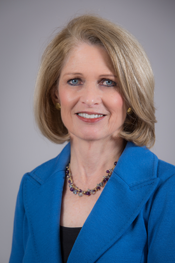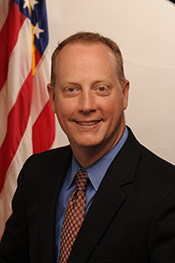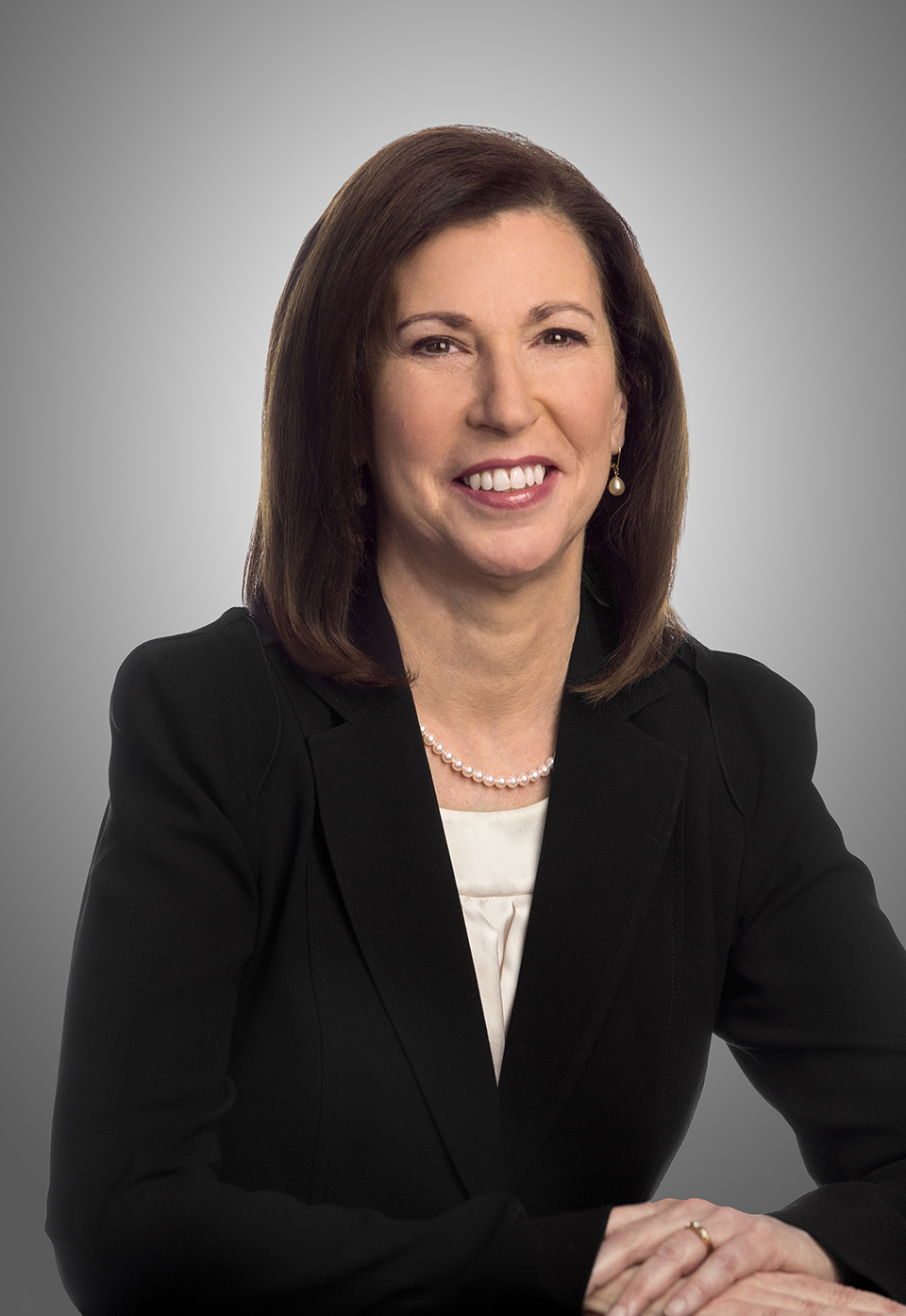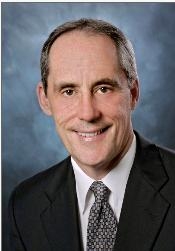Auto logout in seconds.
Continue Logout
This interview with Marna Borgstrom, president and CEO of Yale New Haven Health System, was conducted by Eric Larsen, managing partner, and Elizabeth Bitton, senior principal, and condensed by Amanda Wolfe, senior director.
Question: Marna, thinking about your background, feels like there is almost a sense of 'predestination.' I've heard your work described as part of the family business. I'd love to hear some reflections on your journey into health care and why you chose this industry.
Marna Borgstrom: When I was a child, my siblings and I went on house calls with my dad, who was the only ophthalmologist in the community of more than 60,000 people where I grew up. My father went to medical school courtesy of the U.S. Army during World War II, trained in Baltimore, and then moved back to the community where my grandparents lived.
All of my summer jobs had something to do with health care. But when I graduated from Stanford with a degree in human biology, I had decided that I did not want to go to medical school. While I was trying to figure out what I wanted to do, I worked as unit secretary on a patient care unit at Stanford Medical Center, which was a terrific way to experience the hospital environment, while not being a patient. That was when the physicians would come out of patient's rooms and put their orders on pieces of paper in front of the secretary to post on a cardex.
Eventually it became clear that I couldn't work my way up from there. So, after two years, I went to graduate school and began a health care career in earnest after that.
Q: I'm always fascinated to explore the theme of mentorship. Who are some of the people who've had a disproportionate impact on your career?
Borgstrom: I'd like to think that who I've become is a composite of the special attributes of several wonderful people with whom I've had the opportunity to work with. You figure out what works for you by watching other successful people and adapting their behaviors to your own personality.
My dad was an influence. Paul Hofmann, who was director of Stanford Hospital when I was first working was an influence. Joe Zaccagnino, my predecessor at Yale New Haven Health System, certainly had a huge influence on my career and was my true mentor.
I also watched and tried to assess the successes of the relatively few women board members and community leaders I knew to understand how they navigated in a more male-oriented leadership environment at the time.
Q: You've raised an important point. Historically, there's been a lamentable scarcity of women in senior positions. Now, fortunately, that's changing. I'm curious how you think about mentoring women in particular.
Borgstrom: I was privileged to be included in a small group called Women of Influence, started by Joanne Conroy, who at the time was the CMO at the American Association of Medical Colleges. This year, the group established a mentoring program. In my early discussions with my mentee, she has been most interested in how my career grew. I realized in talking with her that I probably haven't been as deliberate as I should about supporting other developing women leaders. I will try to change that.
Q: Is there something you wish you knew when you were first starting out, or if you could teleport back, what would you tell 25-year-old Marna?
That's a really thoughtful question. I wish I could tell 25-year-old me that it's OK to be me. For a lot of my early career, I kept trying to be the 'me' I thought would impress others. It was a little bit of the, 'I'm not good enough, I don't know how I got here,' impostor syndrome. That feeling that I was never quite measuring up and that this was all going to come apart at some point probably consumed too much of my energy earlier in my career.
You have to figure out what works for you, and if it's real, it's going to take.
Navigating partnerships
Q: A partnership you were working with Tenet recently fell through, and Tenet also ended its plans to partner with some other hospitals around Connecticut. Can you talk about what happened there?
Borgstrom: If anyone had ever told me that we were going to pursue a major joint venture with Tenet, I would have said they were crazy. I have lived in the not-for-profit world and had a stereotypic view of investor-owned companies like Tenet.
I thought partnering with Tenet was a real opportunity for us. We needed to expand geographically, but we also wanted to extend our clinical service lines and our destination services, and at the same time, learn to take risk for much of the care we provide.
As for Tenet, they wanted to get a footprint in the Northeast to link to investments they'd made previously. They were outsiders in our region and needed some 'brand credibility,' and we could offer that. Together we hoped to build a regional health care network that could enhance access to care, offer a broad care portfolio and do it more cost effectively.
Our interview with Fetter
How Trevor Fetter brought Tenet back from a crisisUnfortunately, Connecticut's Office of Health Care Access came out with some really stringent conditions around staffing and programs for the hospitals Tenet wished to acquire. Trevor Fetter [Tenet's CEO] tried to negotiate with the governor, but ultimately the deal fell through. While I really miss having the opportunity to work with them, I would have walked away, too, if I were them.
Q: I'm curious to hear your perspective on the regulatory and legislative environment here in Connecticut, and how it's affected your business. Is it correct to say that Yale New Haven Health System has borne the brunt of some new taxes and Medicaid cuts?
Borgstrom: Three years ago, in a biennial budget, lawmakers implemented the first component of a hospital tax with the goal of increasing the federal match with the commitment that once matched, they would return the hospitals' funds. The state got the match, kept the hospital tax revenue and, this year, when lawmakers realized there were budget issues again, they added a $61 million tax, of which the Yale New Haven Health System is responsible for almost 85%. They created this Goldilocks type formula, where if you provided 'too much Medicaid service' you paid in to the fund and if you did 'too little' you paid in disproportionately.
Then the governor issued an unexpected budget rescission order in September further reducing hospital-based Medicaid payments by approximately $240 million (the state's allocation plus the federal match). So for our health system, which was only being paid 58 cents on the dollar of cost a year ago, we now must manage an additional revenue loss of $100 million annually, resulting in one-quarter of our patient volume paid at 42 cents on the dollar of cost. So we are continuing our systemwide work to make care better and more affordable and as fast as we can do that, the state takes all the savings.
Q: In that kind of environment, what's the prognosis for Connecticut's hospitals?
Borgstrom: One of two things will happen. Either the state is going to start to intentionally support the demise of some of these organizations or they'll use appropriated money from the stronger organizations to continue to put big band-aids on struggling hospitals.
I worry that will weaken the entire field. Struggling organizations may get a short-term reprieve, but they won't be able to make the kinds of infrastructure and innovation investments that they need to make to thrive. And by taking earned money from stronger organizations, it will be harder and harder to produce a margin and evolve productivity.
Q: Now that you can no longer partner with Tenet, how do you think about architecting your partnership strategy, M&A activity, and so on, in light of some of the things we've talked about?
Borgstrom: I believe that partnerships and integrations are going to remain a robust part of the health care landscape, especially as we move to value-based and total cost of care models of care. We believe that greater scale will help us improve access and make health care more affordable. In strategic acquisitions/partnerships you can integrate/consolidate many departments and administrative resources that don't directly affect the patient but add costs in stand-alone organizations. Further, we aren't good at every aspect of health care and partnerships with others who operate successfully in spaces we don't can be far more successful than trying to build every needed service/program. At the same time, we have to recognize that we have a really good sick care system in this country.
The strategic thinker's guide to partnerships and affiliations
What we can't do is throw the baby out with the bath water. We can't ignore the fact that the two-thirds of the insured people who make up our business model right now tend to be among the less healthy and are and will continue to use our current resources disproportionately. People are living longer, and cancer, heart disease, and certain neurovascular diseases are now considered chronic diseases. We have to be able to provide great care and service and have a business model that recognizes that.
Looking toward the future
Q: Let's talk a little bit about the AMC conundrum. By my rough math, out of the 115 or so AMCs, about a third are extremely vulnerable. Another third are in a hugely transitional 'moment'. The balance are actually doing extraordinarily well. Marna, how do you think AMCs will survive this transition we've been talking about?
Borgstrom: Our system is anchored by an academic medical center with 1,544 beds, so it is a big part of our business. AMCs can be steeped in tradition, but every AMC with which I am familiar is evolving to provide more value-based care. It's hard for all providers to make that transition, but especially AMCs because they have elements of their missions and related overhead that other systems don't have. I worry that if we don't support academic medicine, we are being very short-sighted. But the business model in academic medicine is challenged. For example, a medical school dean has three missions; research, teaching, and clinical care. He generally loses money both on teaching and research, but makes the difference up with clinical income.
In a world that is rewarding value, academics have a hard time demonstrating that a lot of what they do is different than other providers. At the same time, if they cannot sustain their business model, they will have a difficult time meeting their missions.
We have about $220 million a year that flows from the teaching hospital to our medical school partner. Those funds pay for medical leadership and tertiary care recruitments, for certain post graduate training expenses, for destination services, and a host of other things. But we've got a lot of pressure on our cost structure right now and we in turn are putting pressure on them.
What we're trying to do is figure out how we can describe a common line of sight to help each other adapt better. Even places like ours are struggling to figure out what the business model should be to support and sustain great academics, teaching, research, and clinical care.
Q: Fast forward to Jan. 1, 2018. What does success look like for Yale New Haven Health System?
Borgstrom: Our quest, independent of how we're paid and who our patients are, is to provide unparalleled value. We need to figure out how to edify ourselves and others as to what great, safe, quality health care at an affordable price, and we have to be part of investing in healthier communities that can over time significantly change what kinds of and how much care is needed.
Get more lessons from the C-suite
See the Daily Briefing's archive of must-read interviews with other top hospital and health system leaders, including:
 How the government's chief medical officer views the health care industry
How the government's chief medical officer views the health care industry
Patrick Conway, CMO and acting principal deputy administrator at CMS, talks about the pace of change in health care today, how a new president could affect delivery system reform, and more. Read our interview with Patrick.
 Meet Sarah Krevans, Sutter Health's next CEO
Meet Sarah Krevans, Sutter Health's next CEO
Sarah Krevans, current COO of Sutter Health, talks about what lies ahead for her system as she takes over as CEO next year. Outgoing CEO Patrick Fry offers some reflections on his 30-year career. Read our interview with Sarah and Patrick.
 Cedars-Sinai's CEO survived an earthquake on his first day. Here's what shake-ups he sees for the health care industry.
Cedars-Sinai's CEO survived an earthquake on his first day. Here's what shake-ups he sees for the health care industry.
Thomas Priselac, president and CEO of Cedars-Sinai Health System, discusses authentic leadership, the future of academic medical centers, and how his institution is approaching partnerships. Read our interview with Thomas.
Don't miss out on the latest Advisory Board insights
Create your free account to access 1 resource, including the latest research and webinars.
Want access without creating an account?
You have 1 free members-only resource remaining this month.
1 free members-only resources remaining
1 free members-only resources remaining
You've reached your limit of free insights
Become a member to access all of Advisory Board's resources, events, and experts
Never miss out on the latest innovative health care content tailored to you.
Benefits include:
You've reached your limit of free insights
Become a member to access all of Advisory Board's resources, events, and experts
Never miss out on the latest innovative health care content tailored to you.
Benefits include:
This content is available through your Curated Research partnership with Advisory Board. Click on ‘view this resource’ to read the full piece
Email ask@advisory.com to learn more
Click on ‘Become a Member’ to learn about the benefits of a Full-Access partnership with Advisory Board
Never miss out on the latest innovative health care content tailored to you.
Benefits Include:
This is for members only. Learn more.
Click on ‘Become a Member’ to learn about the benefits of a Full-Access partnership with Advisory Board
Never miss out on the latest innovative health care content tailored to you.
